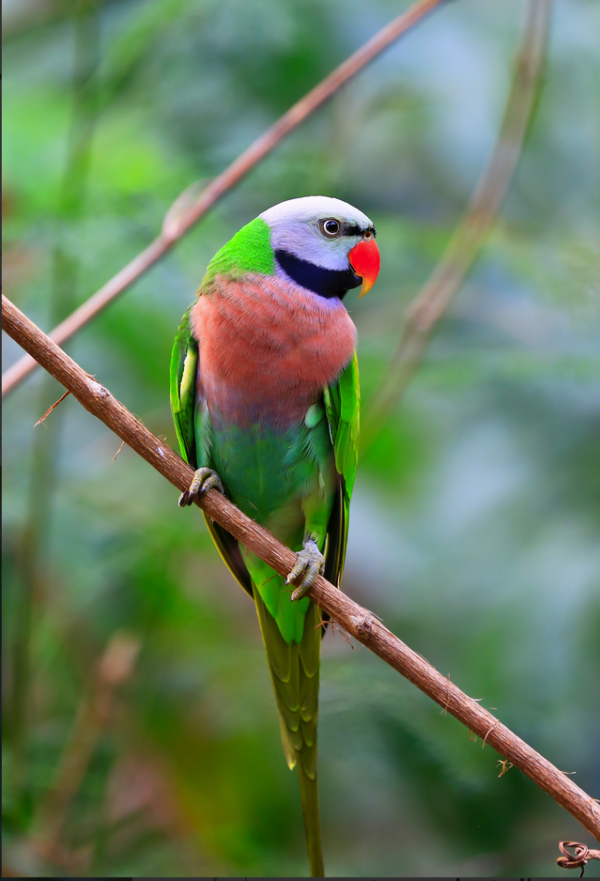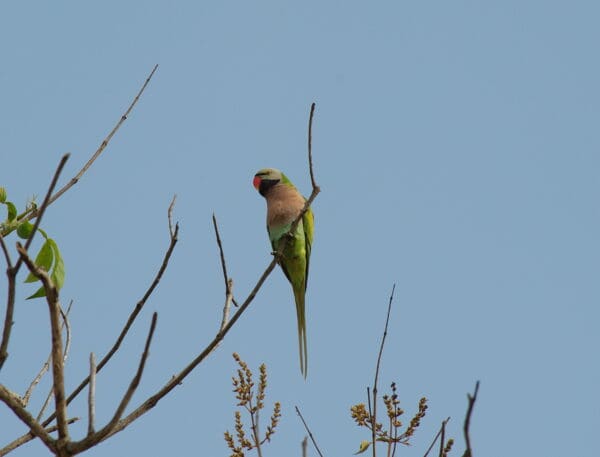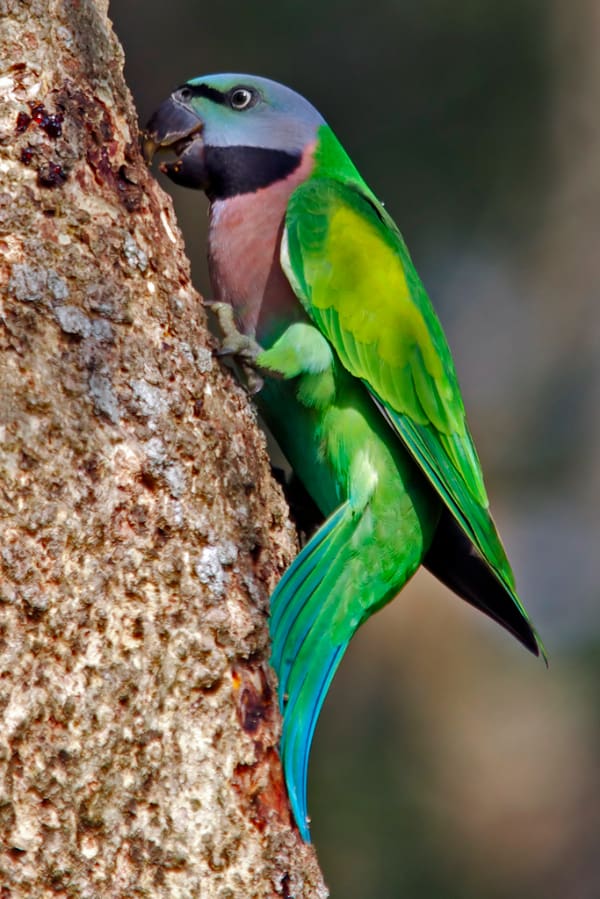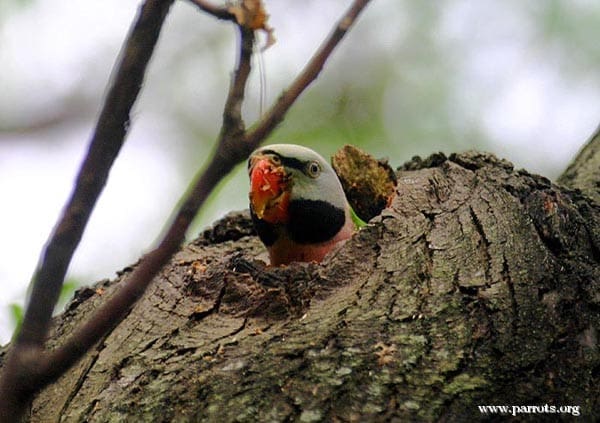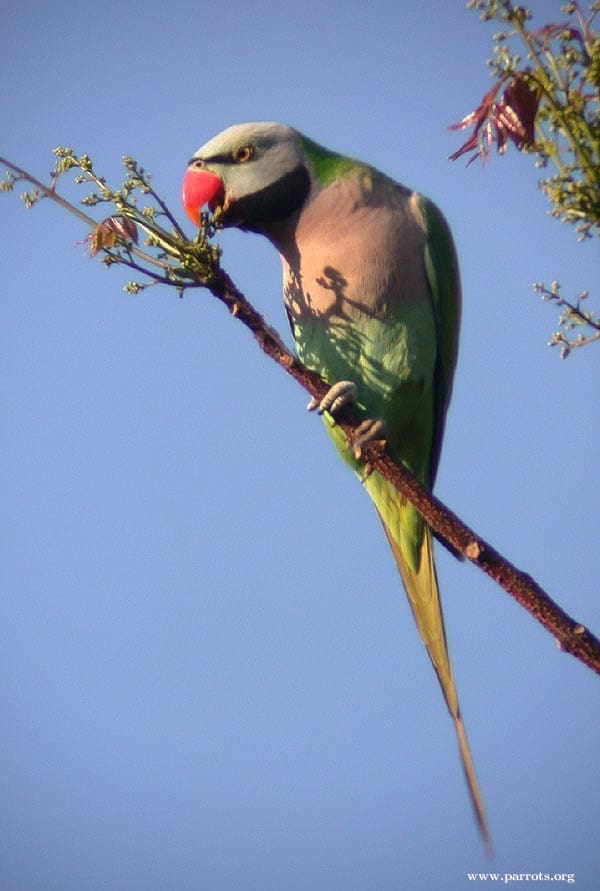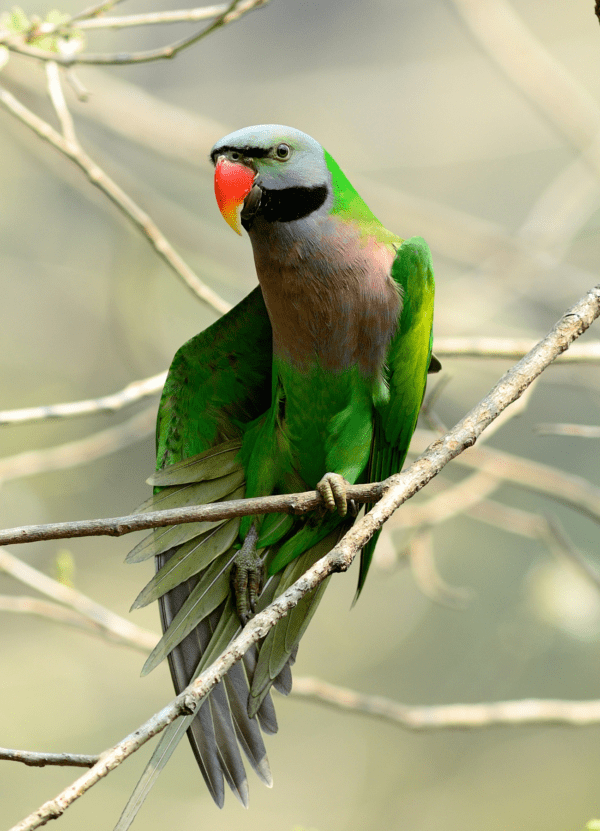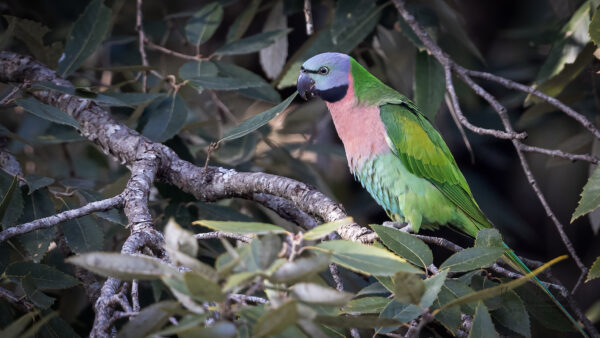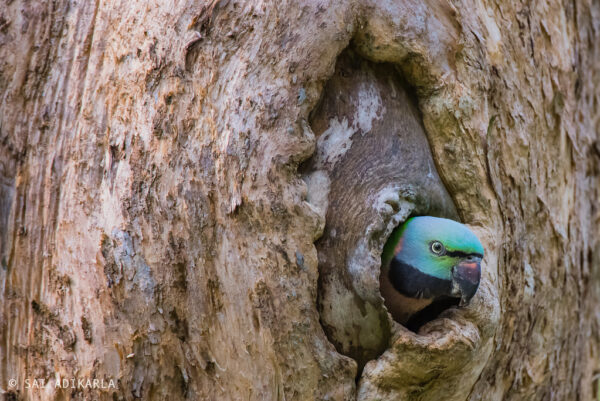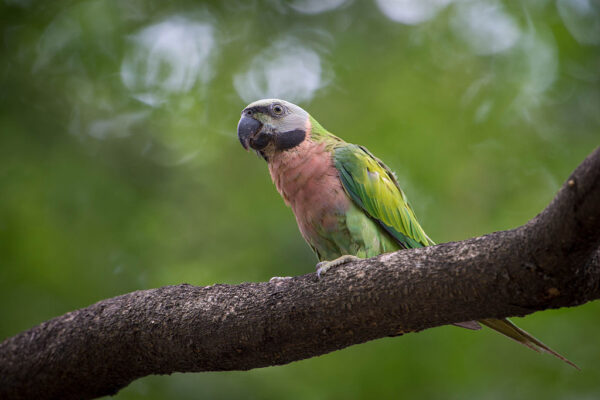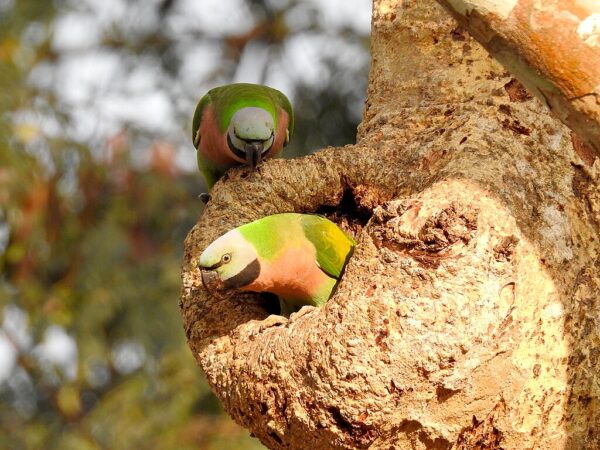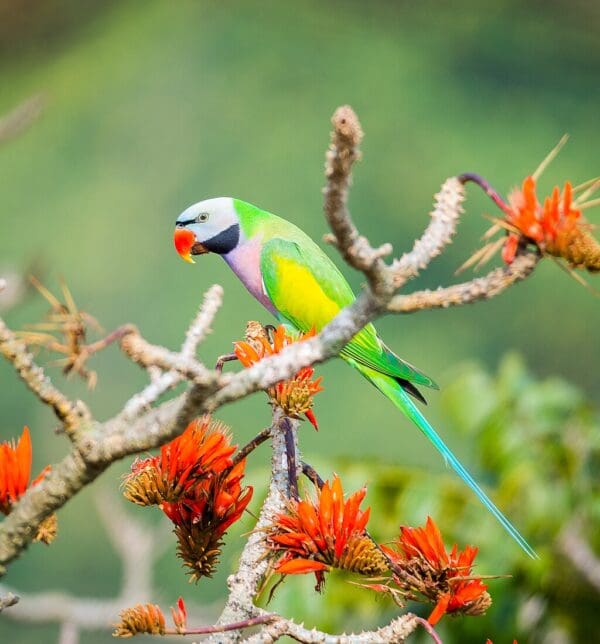Red-breasted Parakeet
Also known as:
Moustached Parakeet, Banded Parakeet, Bearded Parakeet, Rose-breasted Parakeet, Pink-breasted Parakeet, Indian Red-breasted Parakeet (P.a. fasciata), Javan Parakeet (P.a. alexandri)
Also known as:
Moustached Parakeet, Banded Parakeet, Bearded Parakeet, Rose-breasted Parakeet, Pink-breasted Parakeet, Indian Red-breasted Parakeet (P.a. fasciata), Javan Parakeet (P.a. alexandri)
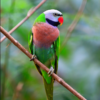
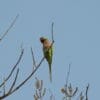
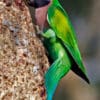




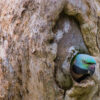
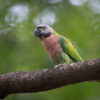
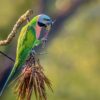
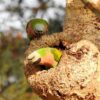
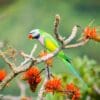
DID YOU KNOW?
The Red-breasted Parakeet has been heavily traded: since 1981, 129,965 individuals have been recorded in international trade.

Psittacula

alexandri
Size:
33 cm (12.9 in)
Weight:
156 g (5.5 oz)
Subspecies including nominate:
eight: P.a. alexandri, P.a. kangeanensis, P.a. dammermani, P.a. fasciata, P.a. abbotti, P.a. cala, P.a. major, P.a. peronica
Colour Adult:
P.a. alexandri: Both adults green upperparts; green/yellow median wing coverts forming large patch on wing; grey head, with varying tinges of blue, and around eyes washed with green; black narrow line from forehead to eyes and black wide band across lower cheeks; salmon/pink throat to upper abdomen which is duller in female; green lower abdomen to undertail coverts with blue suffusion; blue central tail feathers tipped with yellow/green. Beak coral red. Eye pale yellow.
P.a. kangeanensis: Both adults as in alexandri, but minimal blue wash on grey head; yellow wing patch in male more extensive. Larger bill.
P.a. dammermani: Both adults as in alexandri, but larger; crown more blue. Beak heavier.
P.a. fasciata: Male-differs from alexandri by head being more blue/grey; dark pink throat to upper abdomen suffused with lilac/blue. Upper mandible red, lower mandible brown/black. Female-breast less washed with lilac and reaching up side of neck in front of green hindneck; grey head less blue. Beak black.
P.a. abbotti: Both adults as in fasciata, but in general colour paler. Larger in size.
P.a. cala: Both adults as in fasciata, but larger; paler green upperparts; less lilac/blue wash on throat to upper abdomen, particularly in female.
P.a. major: Both adults as in cala, but larger; in male, less blue wash on lower abdomen to undertail coverts.
P.a. peronica: Both adults as in major, but slightly smaller in size; in male, brighter green lower abdomen to undertail coverts.
Colour Juvenile:
P.a. alexandri: Green crown and underparts; dark brown lower cheeks; brown/grey wash on green sides of head; green median wing coverts margined with yellow/green. Tail short. Beak pale red. Eye grey.
P.a. fasciata: As in alexandri. Beak orange/red.
Call:
Calls are described as raucous and trumpet-like. Also shrill notes, shrieks and whistles, and plaintive sounds.
More Information:
Content Sources:
CITES
BirdLife International
Cornell Lab of Ornithology/Birds of the World
Parrots: A Guide to Parrots of the World, Juniper and Parr, 1998
Parrots of the World, Forshaw and Cooper, 1977. 2010 edition
Parrots of the World, Forshaw, 2006.
Parrots in Aviculture, Low, 1992.
Psittacine Aviculture, Schubot, Clubb and Clubb, 1992.
Captive Status:
Fairly common.
Longevity:
20-25 yrs
Housing:
Walk-in enclosure, minimum length 3 m (9.8 ft).
Diet:
Small seed mix such as: canary, millet and smaller amounts of oats, buckwheat, safflower and a little hemp; limited sunflower seed; spray millet; green leaves such as: Swiss chard, lettuce, sowthistle, dandelion, chickweed; and seeding grasses; peanuts; oats and boiled maize when rearing young; complete pellet.
Enrichment:
Are vigorous chewers so provide bird-safe, unsprayed branches (fir, willow, pine and elder) and limbs, wooden toys, vegetable tanned leather toys, heat sterilized pine cones.
Nest Box Size:
Vertical box 12″ x 12″ x 18″ (30.5 cm x 30.5 cm x 46 cm).
Clutch Size:
3-4
Fledging Age:
7 weeks
Hatch Weight:
—
Peak Weight:
—
Weaning Weight:
—
World Population:
Unknown but reported as undergoing a moderately rapid decline.
IUCN Red List Status:
Near Threatened
CITES Listing:
Appendix II
Threat Summary:
Not globally threatened. Generally common throughout range, but considerable decline in Thailand and Laos and likely uncommon in China. Appears to be no recent reports from many of the small Indonesian islands where it is found. Threatened by ongoing habitat destruction and unsustainable exploitation for trade.
Range:
P.a. alexandri: Java and Bali, Indonesia; introduced to Barito region, Kalimantan, SE Borneo.
P.a. kangeanensis: Kangean Islands, Java Sea.
P.a. dammermani: Karimunjawa Islands, in Java Sea.
P.a. fasciata: Lower Himalayas from N Uttar Pradesh east to Arunachal Pradesh and Assam, N India, and through Burma, Thailands, south to Ranong, and Indochina to SE China, in SE Xizang, Yunnan, SW Guangxi, and Hainan Island; introduced Singapore, Hong Kong, and cities in southern Guandong, SE China.
P.a. abbotti: Andaman Islands, in Bay of Bengal.
P.a. cala: Simeulue Island, off northwest coast of Sumatra.
P.a. major: Banyak Islands, off west coast of Sumatra.
P.a. peronica: Nias Island, off west coast of Sumatra.
Habitat:
Found up to 1500 m (4920 ft) in all forest types and wooded areas including dry forest, moist-deciduous secondary rainforest, mangroves, coconut and mango groves, cultivated areas with trees, parks and urban areas.
Wild Diet:
Feeds on wild Ficus figs, nectar and flowers of Salmalia, Bombax, Butea, Parkia speciosa and Erythrina variegata, seeds of Albizia, Castanea chestnuts, fruits of bananas, leaf buds of teak, rice and other grain recorded.
Ecology and Behaviour:
Sociable; seen in flocks of 6-10 birds, less often up to 50. Rarely forms groups of thousands when food abundant. Roosts communally in tall trees, bamboo thickets or sugarcane. Has attacked crops.
Clutch and Egg Size:
3-4 broad-oval eggs, 29.5 x 24.0 mm (1.1 x 0.9 in).
Breeding Season:
December-April; in Java, breeding recorded in all months except April. Nest is in hollow limb or tree cavity, often semi-colonially.
Related Links:
—
